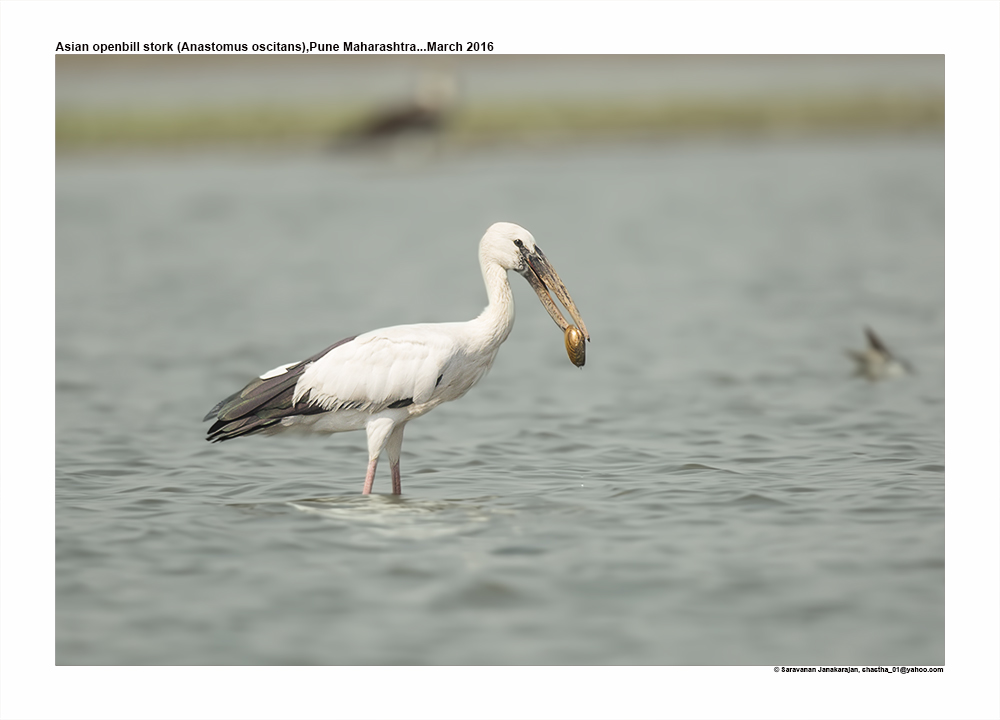Asian Openbill

Asian Openbill Stork Anastomus oscitans
Etymology :
- Anastomus : Greek word anastomoo – to furnish with a mouth, with mouth wide-opened.
- Oscitans : Latin word for Yawning derived from oscitare – to yawn
Vernacular names: Hindi: Gungla, Ghungil, Ghonghila, Sans: Shithilhanubak, Pun: Wiralchunjhadhing, Bi: Dokar, Ben: Thontebhanga, Shamukhbhanga, Shamukhkhol, Ass: Samukbhanga, S.Gond: Pounakonga,Guj: Gugala, Phatichanchdhonk, Mar: Ughadyachochichakarkocha, Mugdhabalak, Ughadtondbalak, Ori: Gendalia, Ta: Naththaikothinaarai, Te: Galukonga, Mal: Cherakokkan, Sinh: Gombellekokka, Bellankokka, Beli kava
Distribution inIndia:Widespread resident in plains of India.
Description: Size of 65-68-cm.It is predominantly greyish in non-breeding season or white in breeding season with glossy black wings and tail that have a green or purple sheen. The name is derived from the distinctive gap formed between the recurved lower and arched upper mandible of the beak in adult birds. Young birds do not have this gap. The cutting edges of the mandible have a fine brush like structure that is thought to give them better grip on the shells of snails. The tail consists of twelve feathers and the preen gland has a tuft. The mantle is black and the bill is horn-grey. The short legs are pinkish to grey, reddish prior to breeding. Non-breeding birds have a smoky grey wings and back instead of white.
Habitat: It is found in a variety of wetlands, including lakes, canals, rivers, marshes and occasionally mudflats; paddy fields also frequently used
Food Habits: It eats almost entirely snailsBird with snail; occasionally other small aquatic animals, such as frogs, crabs and large insects. Specialized bill and technique enables species to exploit abundant source of food, which is inaccessible to most other potential predators. Snails extracted by inserting bill, virtually without damage to shells. It will feed in close association with other large wading birds like Egrets.
Breeding Habits: They breed in July-Sept in North India and Nov-Mar in South India.They are colonial tree nester, sometimes in mixed colonies with herons, cormorants and Painted stork. Nest is a smallish, unelaborated stick nest with central depression lined with leaves; nests often very close together, with 100s spread over a few large trees, but may also nest in smaller trees. They lay a clutch of 2–5 eggs. The incubation period is 27–30 days. The fledging period is 35–36 days.